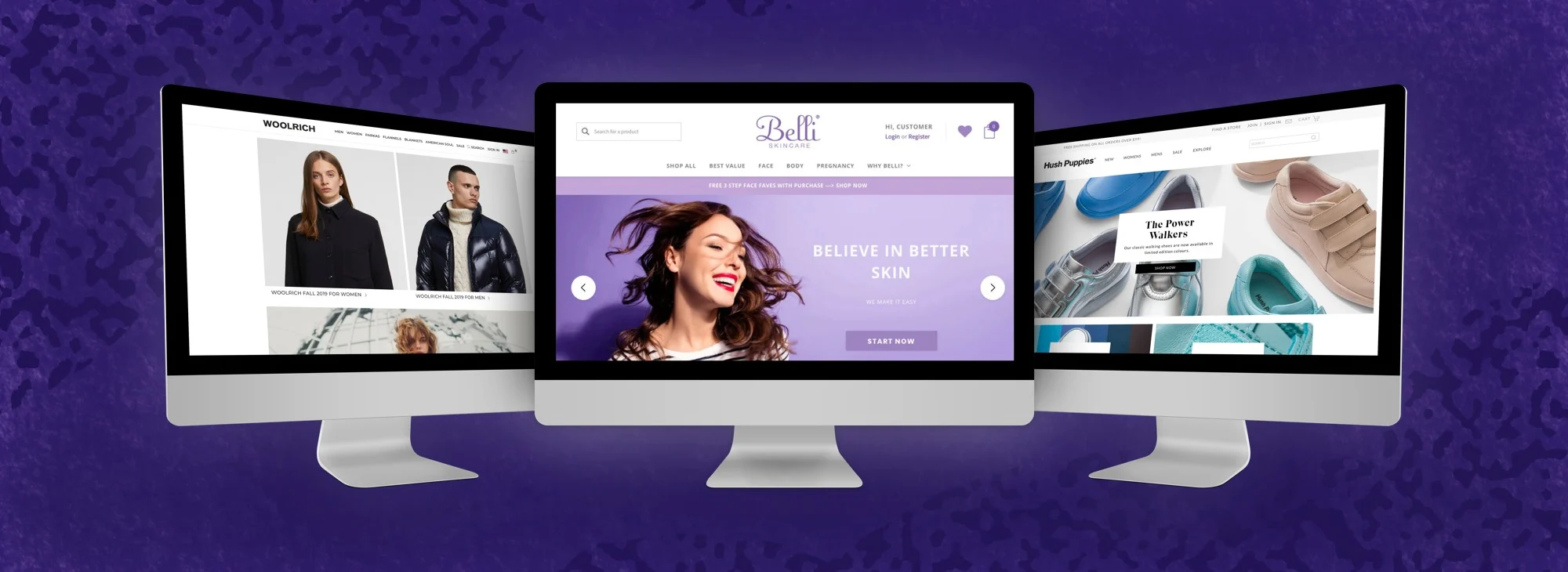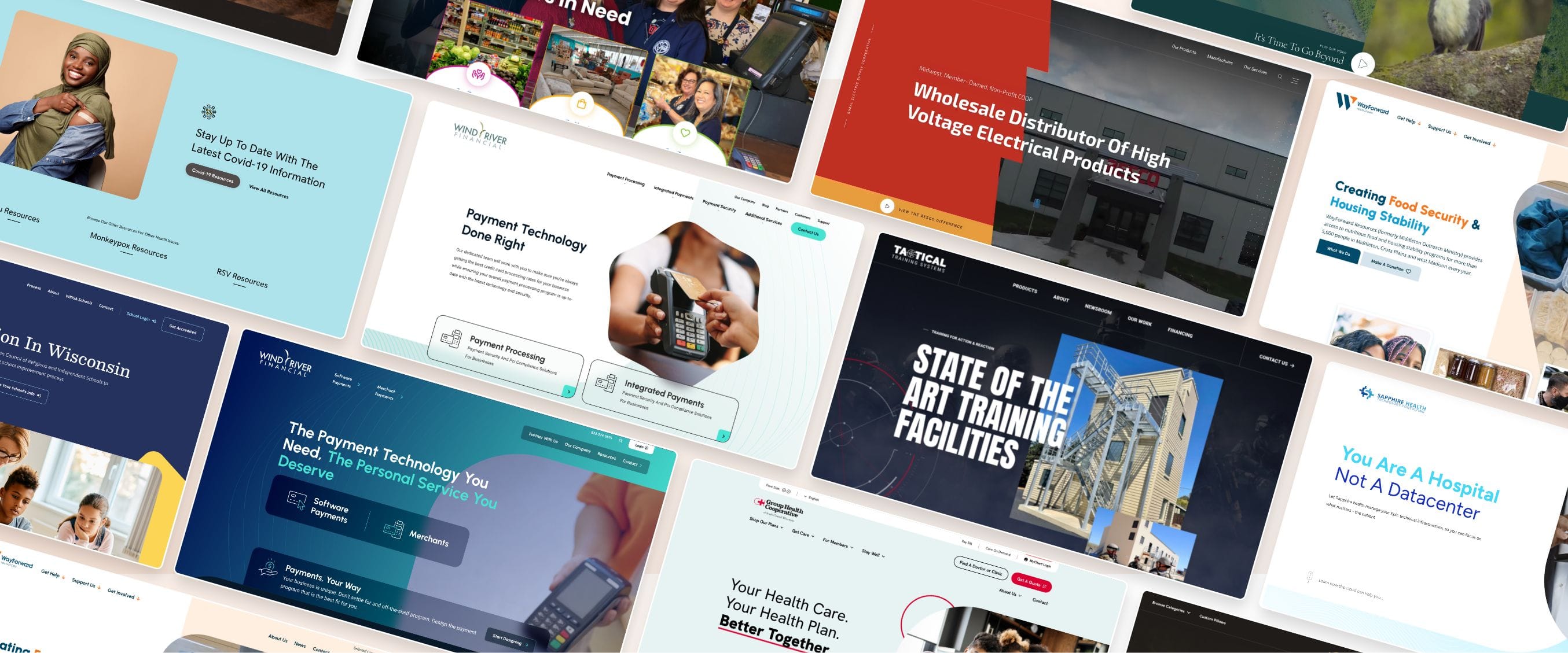Top Trends in Website Design for 2024: What You Need to Know
Modern Site Layout That Captures Attention and Transforms
In an increasingly digital landscape, modern-day website layout has actually arised as a pivotal element in catching individual focus and driving conversions. As we discover these important parts, it ends up being clear that recognizing their interplay can dramatically impact an internet site's efficiency and customer complete satisfaction.
Relevance of Visual Power Structure
Aesthetic hierarchy is a critical component in internet site layout, as it overviews customers' focus and boosts their overall experience. By purposefully arranging material, designers can route individuals to the most essential details initially, consequently boosting interaction and boosting use. Efficient visual power structure utilizes various techniques, consisting of dimension, comparison, color, and spacing. Larger elements normally draw the eye, while contrasting shades can stress crucial messages, making them attract attention amongst more restrained parts.
Integrating a logical circulation in web content arrangement is important; for example, positioning one of the most crucial details on top of a page cultivates prompt acknowledgment. Constant use of typography, such as differing font dimensions and designs, helps establish a clear web content structure. This company not just aids in navigating but additionally develops trust fund, as users feel a lot more comfy when they can easily discover what they are trying to find.
Eventually, a well-executed visual hierarchy not just improves visual charm yet also significantly affects user habits. By prioritizing essential elements and guaranteeing a smooth experience, developers can properly convert visitors into clients, strengthening the relevance of this fundamental style concept in modern-day site development.
Responsive Layout for All Devices
Producing a seamless experience across various tools is vital in today's electronic landscape, where customers access sites from smart devices, desktop computers, and tablet computers alike. Responsive design is a crucial strategy that makes certain web sites adjust fluidly to various display dimensions, alignments, and resolutions. By using adaptable grids, pictures, and CSS media inquiries, designers can develop layouts that keep aesthetic stability and functionality, no matter the gadget being utilized.
The value of responsive layout prolongs beyond aesthetics; it straight affects customer involvement and conversion rates. An internet site that works well on all devices urges longer gos to and reduces bounce rates, as individuals are more most likely to engage with material that is very easy to navigate. Search engines, particularly Google, prioritize mobile-friendly websites in their rankings, making receptive layout an important element of search engine optimization (SEO)
Integrating receptive design not only improves individual experience but likewise enhances the advancement process. By creating a solitary website that functions throughout gadgets, organizations can save time and resources contrasted to establishing separate mobile and desktop computer variations. Inevitably, receptive style is a basic technique for modern-day web site design, making sure accessibility and contentment for all customers, regardless official source of their gadget.
Involving Interactive Components
While a receptive layout lays the foundation for a functional website, including appealing interactive elements is critical for catching individual attention and cultivating deeper connections. Website Design. Interactive elements, such as computer animations, quizzes, and clickable infographics, produce a more dynamic customer experience, urging site visitors to invest even more time on the site
Integrating interactive functions can additionally guide users with facility details, making it much easier to absorb content. As an example, interactive sliders can show product variants, while embedded video clips can provide demos or testimonies that resonate even more than fixed photos or text. Moreover, gamification techniques, like incentives for engaging or completing tasks with material, can enhance customer inspiration and retention.
Efficient use of interactive components not only enriches the user experience however can additionally lead to greater conversion rates. It is vital to balance interactivity with performance; excessively complicated functions might a fantastic read prevent site speed, negatively impacting individual fulfillment.
Streamlined Navigating Practices
Reliable navigation is a cornerstone of any type of effective web site, as it directly affects user experience and material availability. Structured navigation techniques guarantee that users can quickly locate information, enhancing their communication with the site. A well-structured navigating food selection ought to be basic and user-friendly, normally featuring a limited number of primary groups to stay clear of overwhelming site visitors.
To achieve structured navigation, designers need to prioritize an ordered structure that logically arranges material. Executing breadcrumb routes can supply customers with context about their existing place within the website, allowing for smooth backtracking. Additionally, utilizing drop-down food selections can efficiently preserve space while still giving access to subcategories.
Receptive style is critical, as navigation must be useful throughout all devices (Website Design). Mobile individuals, particularly, take advantage of touch-friendly menus and collapsible sections that keep functionality without jeopardizing appearances

Effective Call-to-Action Techniques
A well-crafted call-to-action (CTA) is essential for directing customers toward wanted results on a site, as it encourages them to engage with web content or purchase. To maximize their effectiveness, CTAs ought to be clear, engaging, and purposefully put throughout the website.
First, utilize action-oriented language that connects seriousness or worth, such as "Get going," "Sign up with Now," or "Insurance claim Your Price cut." This language not only motivates customers however also sets clear expectations regarding the next actions.
2nd, think about design components; CTAs must stand apart aesthetically via contrasting shades, ample whitespace, and popular positioning. A switch that is easy to see and click increases the possibility of user interaction.
Additionally, personalizing CTAs based upon individual habits or demographics can considerably improve engagement. Customized messages resonate much more with customers, driving higher conversion rates.

Final Thought
These elements collectively boost customer experience, ensuring that site visitors remain involved and inspired to check out content better. By prioritizing these style principles, companies can dramatically boost customer retention and conversion prices, ultimately leading to higher success in the digital landscape.
In a significantly digital landscape, contemporary internet site layout has arised as a crucial aspect in recording user focus and driving conversions.Aesthetic hierarchy is a critical aspect in internet site style, as it guides customers' focus and view it improves their total experience.The relevance of responsive design expands beyond appearances; it directly affects individual interaction and conversion rates.Integrating responsive design not only improves individual experience but likewise improves the growth process. Ultimately, receptive design is a basic strategy for modern website style, guaranteeing access and contentment for all users, no matter of their gadget.